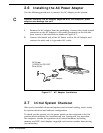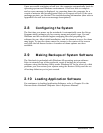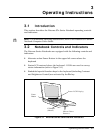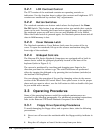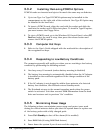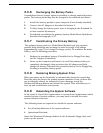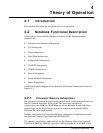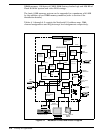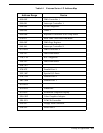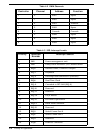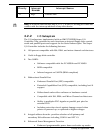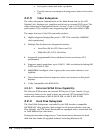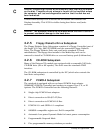
4
Theory of Operation
4.1
Introduction
This section describes the notebook theory of operation.
4.2
Notebook Functional Description
Functionally, the notebook computer consists of the following major
subsystems:
•
Processor and Memory Subsystem
•
I/O Subsystem
•
Video Subsystem
•
Hard Disk Subsystem
•
Floppy Disk Subsystem
•
CD-ROM Subsystem
•
PCMCIA Subsystem
•
Sound Subsystem
•
Serial Infrared Subsystem
•
Power Subsystem
A functional block diagram of the Extensa 57x Series Notebook is shown in
Figure 4-1.
4.2.1
Processor/Memory Subsystems
The Processor function, housed on the Main Board, is implemented with the
Intel
Pentium Processor (P54C/LM). The processor operates in
conjunction with RAM and ROM Memory on the Memory Board and other
control logic on the Main Board to process software instructions (BIOS,
Windows 95, and Applications).
Primary control for the Processor/Memory subsystem is implemented with
the Pentium Chipset (Opti Viper 82C556/82C557).
The memory subsystem, implemented on the Memory Board and optional
Dual Inline Memory Modules, provides 8 MB (expandable to 40 MB) of fast
Theory of Operation
4-1



